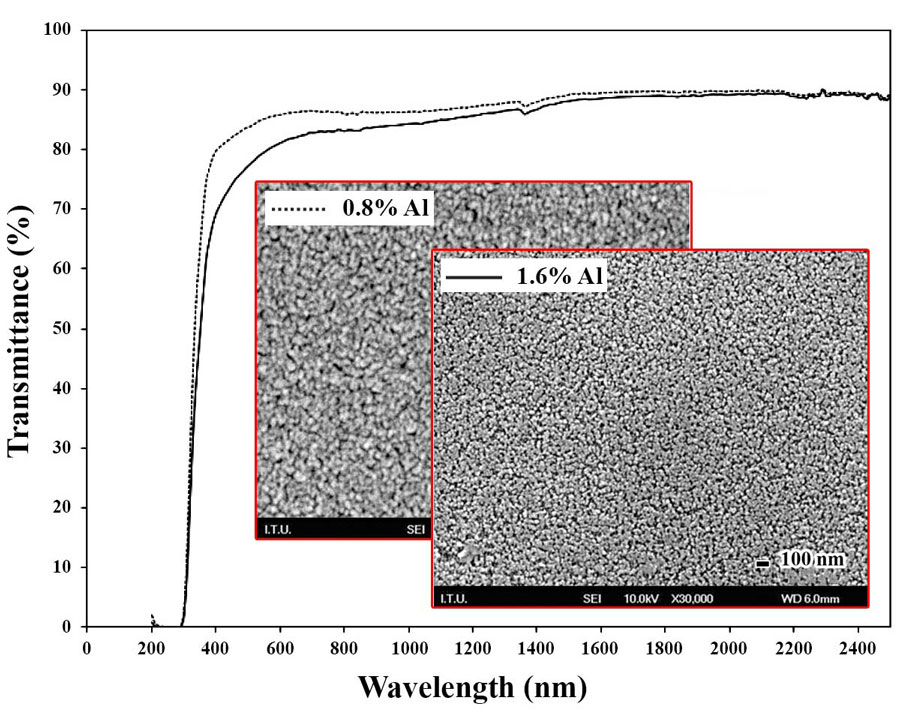Influence of Al content on microstructure and optical transmittance of sol-gel dip-coated ZnO films
- 1 Department of Optician, Vocational School of Health Care, Sirnak University, Sirnak, Türkiye
- 2 Physics Department, Science Faculty, Istanbul University, Istanbul, Türkiye
- 3 Energy Institute, Istanbul Technical University, Ayazaga Campus, Istanbul, Türkiye
Abstract
Aluminum-doped zinc oxide thin film (Al:ZnO) was derived by the sol-gel dip-coating technique to analyze the doping effect on the film’s crystal structure and optical transparency. The surface structure of the thin film had the particles in the nano-spherical form. Al amount changed surface roughness with the variation of the grain size. The crystal structure of ZnO was wurtzite (in XRD analysis). The surface morphology of the film was also examined with SEM images. The effect of Al doping was investigated to evaluate the necessary amount of Al on the optical properties. The films show high optical transparency (~85%) at specific Al doping amounts (0.8–1.6%).
Downloads
References

Copyright (c) 2022 Mehdi Tonka, Feyza Guzelcimen, Nilgun Baydogan

This work is licensed under a Creative Commons Attribution 4.0 International License.
Copyright
Authors are the copyright holders of their published papers in Synthesis and Sintering, which are simultaneously licensed under a Creative Commons Attribution 4.0 International License. The full details of the license are available at https://creativecommons.org/licenses/by/4.0/.
All papers published open access will be immediately and permanently free for everyone to read, download, copy, distribute, print, search, link to the full-text of papers, crawl them for indexing, pass them as data to software, or use them for any other lawful purpose without any registration obstacles or subscription fees.












